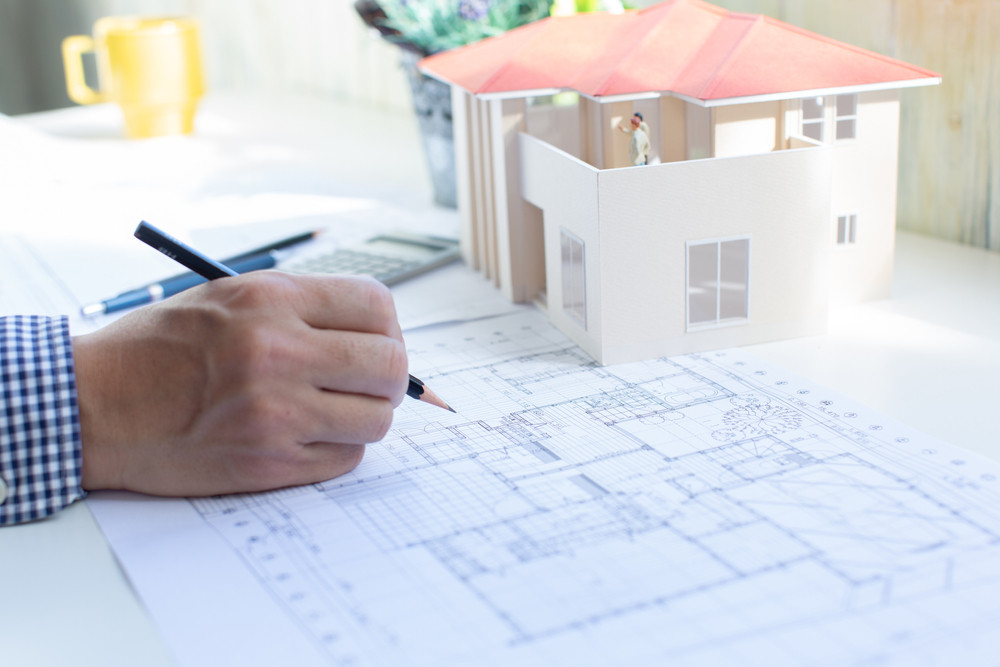Comprehending the Collaborative Process Between Architects and Designers in Modern Building And Construction Projects
The joint procedure between designers and designers is vital in modern-day building tasks, as it harmonizes style intent with design feasibility. Checking out these dynamics discloses understandings that might dramatically impact job end results and overall market criteria.
The Importance of Partnership
The joint synergy between designers and designers is important for the effective understanding of any type of building and construction project. This partnership combines distinctive competence and viewpoints, enabling the integration of ingenious style with functional design solutions. By functioning together, designers and designers can make certain that a task not only meets visual and practical requirements however additionally sticks to security, sustainability, and financial restraints.
Cooperation cultivates a common vision, promoting the placement of objectives and assumptions from the start. This placement is critical in addressing possible obstacles and mitigating threats that can develop throughout the job lifecycle. A collective method allows for the efficient appropriation of sources, enhancing both time and expense.
The value of partnership reaches the iterative procedure of style and construction, where responses from designers can inform architectural choices, resulting in more feasible and lasting styles. Conversely, engineers can influence engineers to assume creatively about just how to achieve architectural stability without compromising imaginative intent. Eventually, the collaborative connection between designers and engineers is not just useful; it is basic to the development of top quality, useful, and innovative built settings that fulfill the demands of society.
Communication Methods and Devices
Efficient communication strategies and tools are essential for promoting cooperation between designers and designers throughout the job lifecycle. Developing clear networks of communication is crucial to guarantee that all group members are lined up with task objectives, timelines, and duties. Regular meetings, both in-person and online, provide chances for stakeholders to review progress, address issues, and make educated choices.
Utilizing job monitoring software, such as BIM (Building Info Modeling) systems, boosts cooperation by enabling real-time sharing of style adjustments and technological requirements. These devices facilitate transparency, enabling designers and designers to picture adjustments and assess their effect on the overall project.

Shared Objectives and Task Vision

Establishing shared objectives involves open dialogue and a detailed understanding of each discipline's contributions. Engineers generally concentrate on layout intent, spatial relationships, and individual experience, while designers stress structural integrity, systems performance, and conformity with regulations (cda architects). When these perspectives are lined up, the outcome is a natural task that abides by both innovative ambitions and technological usefulness
Moreover, a well-defined job vision promotes liability amongst staff member, urging each individual to take possession of try here their role in achieving the desired end result. Regular check-ins and collaborative workshops can even more reinforce this commitment, permitting modifications to be made as the job develops. Eventually, a shared vision not only enhances teamwork but also elevates the top quality of the last deliverable, bring about effective task conclusion.
The Function of Innovation
Leveraging innovation has actually come to be essential in enhancing partnership in between engineers and designers. Structure Information Modeling (BIM) stands out as a pivotal innovation, enabling both designers and designers to develop thorough 3D versions that envelop design intent and structural integrity.
Moreover, cloud-based platforms enable seamless collaboration, enabling project stakeholders to access and upgrade job information from anywhere. This promotes a society of openness and accountability, as changes can be tracked and examined in real-time. Additionally, mobile applications further boost communication, offering on-site groups with instant accessibility to project requirements and updates.
Arising innovations such as expert system and artificial intelligence are also starting to contribute in predictive evaluation, assisting groups recognize possible concerns prior to they emerge. Ultimately, the duty of technology in architecture-engineering collaboration not just improves process efficiencies but also enhances development, leading to even more effective project outcomes. By accepting these technological developments, engineers and designers can guarantee a more cohesive and effective collective procedure throughout the construction lifecycle.
Study in Successful Collaborations
Countless study show the profound influence of efficient collaborations in between architects and designers on project results. One significant instance is the cooperation on the High Line in New York City City, where landscape designers, designers, and city planners collaborated to change an abandoned railway into a lively public park. This multidisciplinary method not just boosted the visual top quality however additionally made sure structural safety and environmental sustainability.
An additional excellent instance is the layout and building and construction of the Sydney Concert Hall. The partnership between engineer JÃ ¸ registered nurse Utzon and structural engineer Ove Arup exemplified cutting-edge analytic. Their partnership enabled for the iconic shell-like style while addressing complex design challenges, ultimately causing a timeless building work of art.
The Burj Khalifa in helpful resources Dubai additionally demonstrates the relevance of collaborative efforts. cda architects. The combination of architecture and design experience allowed the project team to attain extraordinary heights while adhering to security guidelines and aesthetic vision
These examples emphasize the relevance of communication, count on, and shared goals. In today's complex construction setting, such collaborations are necessary to go to this site browsing difficulties and delivering tasks that fulfill both practical and visionary objectives.
Conclusion
In final thought, the partnership in between architects and engineers is necessary for the success of contemporary building and construction projects. Effective communication methods, a shared job vision, and the combination of innovative innovations are essential components that facilitate this collaboration. By cultivating a culture of liability and leveraging tools such as Structure Info Modeling (BIM), teams can navigate task complexities, making certain that visual, practical, and sustainability purposes are achieved. Inevitably, this synergy leads to cutting-edge and successful job end results.